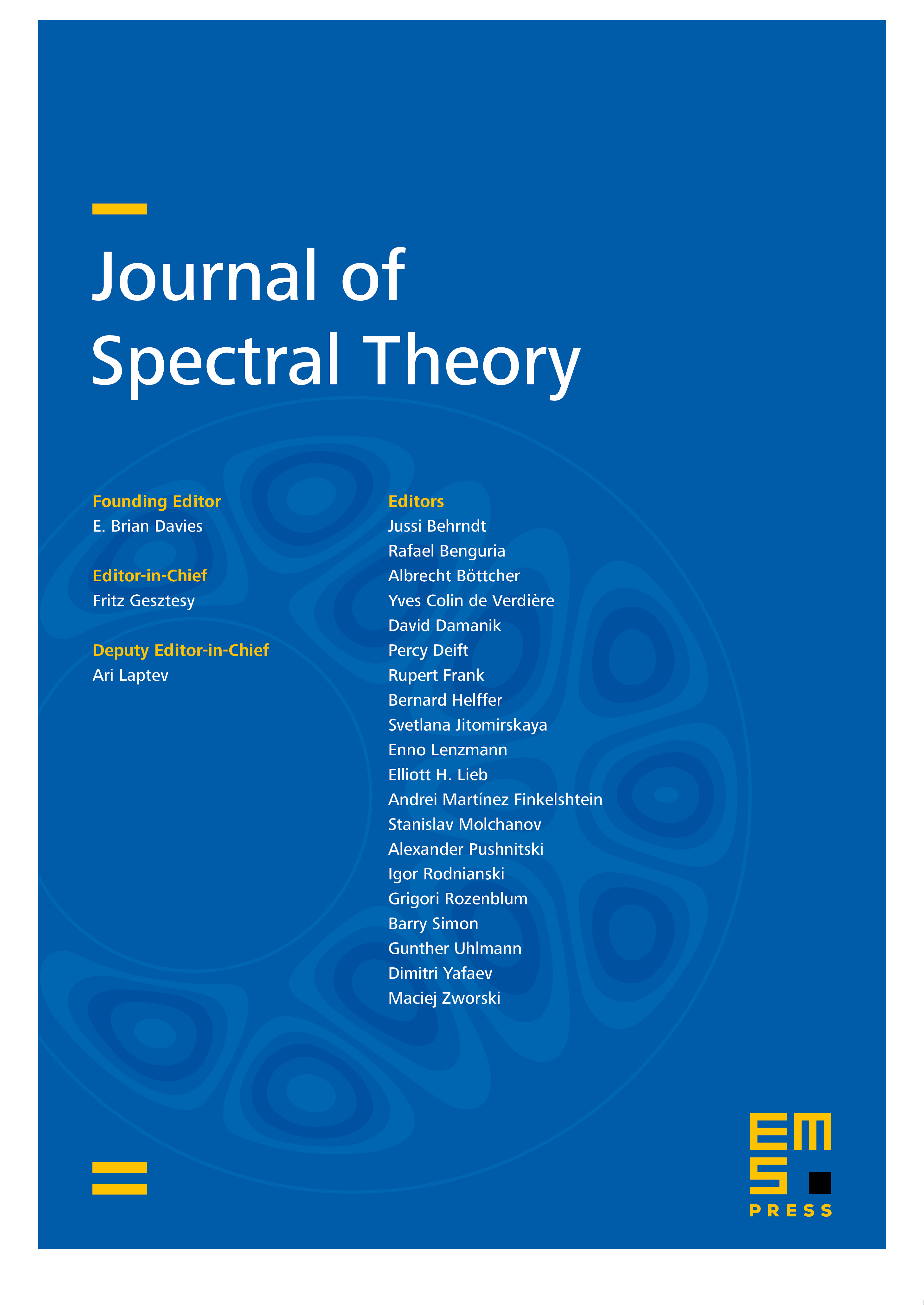Concentration and non-concentration of eigenfunctions of second-order elliptic operators in layered media
Assia Benabdallah
Aix Marseille Université, CNRS, FranceMatania Ben-Artzi
Hebrew University of Jerusalem, IsraelYves Dermenjian
Aix Marseille Université, CNRS, France

Abstract
This work is concerned with operators of the type acting in domains The diffusion coefficient depends on one coordinate and is bounded but may be discontinuous. This corresponds to the physical model of “layered media,” appearing in acoustics, elasticity, optical fibers… . Dirichlet boundary conditions are assumed. In general, for each the set of eigenfunctions is divided into a disjoint union of three subsets: (non-guided), (guided) and (residual). The residual set shrinks as The customary physical terminology of guided/non-guided is often replaced in the mathematical literature by concentrating/non-concentrating solutions, respectively. For guided waves, the assumption of “layered media” enables us to obtain rigorous estimates of their exponential decay away from concentration zones. The case of non-guided waves has attracted less attention in the literature. While it is not so closely connected to physical models, it leads to some very interesting questions concerning oscillatory solutions and their asymptotic properties. Classical asymptotic methods are available for but a lesser degree of regularity excludes such methods. The associated eigenfunctions (in ) are oscillatory. However, this fact by itself does not exclude the possibility of “flattening out” of the solution between two consecutive zeros, leading to concentration in the complementary segment. Here we show it cannot happen when is of bounded variation, by proving a “minimal amplitude hypothesis.” However the validity of such results when is not of bounded variation (even if it is continuous) remains an open problem.
Cite this article
Assia Benabdallah, Matania Ben-Artzi, Yves Dermenjian, Concentration and non-concentration of eigenfunctions of second-order elliptic operators in layered media. J. Spectr. Theory 13 (2023), no. 4, pp. 1173–1224
DOI 10.4171/JST/484